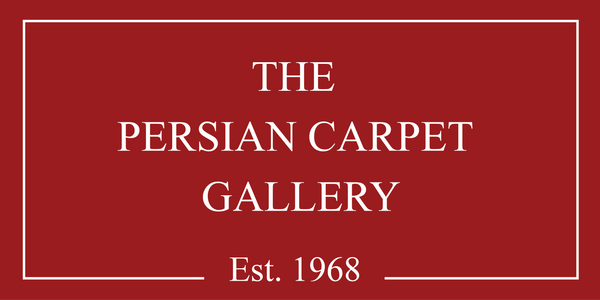Unsure about purchasing a rug online? Try it at home for FREE!
We understand that choosing the perfect carpet from just the images can be challenging. If you're unsure about your choice, simply send the SKU or the link of the carpet to info@pcgaustralia.com or call 1800 2000 28 and we'll make things easier for you with a free home trial Australia-Wide.
Persian Isfahan Silk Found
Stock No. ME-110-000291
Size(m): 2.35×1.52
This Isfahan handmade Persian rug, featuring a silk foundation and measuring 2.35 by 1.52 centimeters, is a masterpiece of magnificence. The central medallion, adorned with two drops, captivates with a restful yet striking darkened pistachio green base in the main field. This color not only soothes but also accentuates the arabesque patterns and motifs, creating a visually captivating tapestry.
A close examination of the lozenge-shaped central medallion of this rugs, suggests the shape of the human eye.
The lozenge-shaped central medallion in the design of a rug, resembling the shape of a human eye, carries symbolic and aesthetic significance. Here are some aspects to consider:
- Symbolism of Protection:The eye, often referred to as the "evil eye" or "nazar," is a symbol of protection in various cultures. The belief is that such an eye-shaped motif guards against malevolent forces and brings good fortune to the owner of the rug. It reflects a cultural desire for warding off negativity.
- Aesthetic Harmony:The lozenge shape, resembling the human eye, introduces an element of symmetry and balance to the rug's design. It contributes to the overall aesthetic harmony and serves as a focal point, drawing attention to the central motif.
- Cultural and Spiritual Significance:The eye motif is prevalent in diverse cultures and holds spiritual significance. It is often associated with spiritual insight, enlightenment, and the concept of watching over or overseeing a space. The use of this shape in a rug design can convey cultural richness and depth.
- Artistic Innovation:Rug makers often incorporate the lozenge-shaped central medallion as a creative and innovative design choice. This shape allows for artistic expression while maintaining a connection to cultural symbolism. The eye motif, when well-executed, adds a layer of sophistication and uniqueness to the rug.
- Eyes as Windows to the Soul:The eye is frequently regarded as a window to the soul, reflecting emotions and inner thoughts. In the context of a rug, the lozenge-shaped central medallion can be seen as a metaphorical window, inviting viewers to engage with the deeper meanings embedded in the design.
In summary, the importance of a lozenge-shaped central medallion resembling the human eye lies in its cultural symbolism, aesthetic appeal, spiritual connotations, and its role as a creative expression within the art of rug making.
The stadium-shaped main field, influenced by the corner spandrels, imparts a sense of dynamic movement to the vines, suggesting a remarkable achievement in capturing motion within the design. The green hue, reminiscent of aqua, carries deep symbolism in Muslim culture and religion, enhancing the carpet's significance.
In rug making, the color green holds cultural, symbolic, and religious significance, particularly in the context of Islamic art and design. Here are some key aspects of the significance and importance of the color green:
- Islamic Symbolism:Green is considered a sacred color in Islam, often associated with paradise and the lush gardens described in Islamic traditions. The Prophet Muhammad is said to have worn a green cloak, further elevating the color's significance. The use of green in rugs can evoke spiritual and divine connections.
- Symbol of Life and Nature:Green is a color commonly associated with nature, growth, and renewal. In rug design, it often represents the natural world, including landscapes, foliage, and vibrant plant life. This symbolism adds a sense of vitality and harmony to the overall design.
- Cultural Associations: Green has cultural connotations in many societies, often representing prosperity, wealth, and good fortune. In rug making, the strategic use of green can contribute to the perceived value and aesthetic appeal of the piece.
- Restfulness and Harmony:Green is known for its calming and restful qualities. In rug design, especially in areas where a sense of tranquility is desired, shades of green can be employed to create a peaceful and harmonious atmosphere.
- Color Combinations:Green is versatile and pairs well with various other colors. Its juxtaposition with different hues can create visually captivating designs. The choice of green as a dominant or accent color in a rug allows for a wide range of creative possibilities.
Overall, the color green in rug design goes beyond mere aesthetics; it carries cultural, spiritual, and symbolic weight, enriching the narrative and depth of the crafted piece.
The extended lozenge-shaped main guard border, resembling an ocular design, adds a distinctive touch. At the heart of the central medallion, a dot symbolizes the gateway to paradise, drawing on the Islamic philosophy where the garden represents a glimpse of perfection, akin to the Garden of Eden.
Floral motifs in the main guard border, rich in color and shape, further contribute to the carpet's impact and beauty. The high knot count ensures clarity in the curvilinear shapes, while the juxtaposition of reds and shades of rose against the dark pistachio green backdrop adds layers of interest for the viewer.
This carpet is not merely a purchase; it is an investment in enduring joy and satisfaction. Its craftsmanship promises endless enjoyment for the fortunate owner and generations to come. Purchase with complete confidence today and bring home a true symbol of magnificence.



